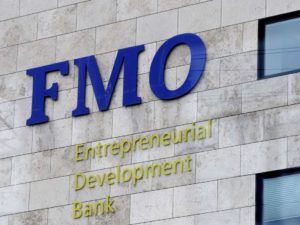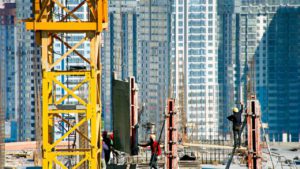
The Norwegian company Scatec Solar has signed an agreement with the Dutch development bank FMO to sell it 40% in a project to build a solar power station with a capacity of 55 MW in Chyhyryn (Cherkasy region), Scatec Solar has reported. “We are pleased to announce this second equity co-investment with our long-term partner FMO. We are working with FMO as a debt and equity partner on a range of projects in Ukraine and internationally and we expect more cooperation in the years to come,” Raymond Carlsen, the CEO of Scatec Solar, said.
“After our first co-investment in the Kamianka solar plant, we are pleased to partner again with Scatec Solar. This second co-investment demonstrates to us the potential of renewable energy in Ukraine. Supporting Ukraine in transitioning to a low-carbon system, is aligned with our strategy to increase our green investments and mitigate climate change,” Linda Broekhuizen, Chief Investment Officer FMO, stated.
“The total investment for the project is estimated at EUR 54 million and is funded by non-recourse debt financing from the European Bank for Reconstruction and Development (EBRD), the Nordic Environment Finance Corporation (NEFCO) and Swedfund. FMO’s equity stake is financed by the Access to Energy Fund, which FMO manages on behalf of the Dutch government,” Scatec Solar said.
The construction of the solar power station in Chyhyryn began in mid-2019. Commercial operation is expected in mid-2020. It is estimated that the station will annually produce about 65 GWh of electricity.

Prices for construction and assembly work in Ukraine in January-September 2019 increased by 7.8% compared with January-September 2018. According to the State Statistics Service, the indicators are given without taking into account the annexed territory of Crimea and Sevastopol, as well as part of the occupied territories of Donetsk and Luhansk regions.
According to statistics, since the beginning of the year, prices have risen in all segments of construction. So, in residential construction the growth was 9.8%, in non-residential some 6.6%, and in engineering 7%.
In September 2019 from September 2018, the cost of construction work in residential construction rose by 6.4%, in non-residential by 1.9%, and in engineering by 3.1%.
In addition, the State Statistics Service said that in September compared with August, the cost of construction of residential buildings increased slightly by 0.3%, engineering structures by 3.1%, while non-residential decreased by 0.3%.
According to the report, in 2018 prices for construction work in Ukraine increased by 23% compared to the previous year, while in 2017 by 13.4%.

Ukraine and France have signed an intergovernmental agreement on the manufacture and technical maintenance of a batch of patrol boats, Ukrainian Interior Minister Arsen Avakov said.
“On behalf of the Ukrainian government the agreement was signed with French Interior Minister Christophe Castaner (EUR 136.5 million) on the production and technical maintenance of 20 patrol boats. Five of them and all RIB-boats [rigid inflatable boats] will be built in Ukraine. We thanked France for the support in building up the maritime security and protection system,” Avakov wrote on Twitter.
France’s OCEA will manufacture the 32-meter-long patrol boats.
“Every fourth boat will be produced in Ukraine. We will thus protect the basins of our seas and owing to the production localization in Ukraine – provisionally, this will be one of the Mykolaiv-based plants – we will be able to restart the manufacture of boats with aluminum hulls. We hope that following this deal we will produce boats at the Mykolaiv plant on a permanent basis,” the press center of the Ukrainian State Border Service quoted the minister as saying.
National bank of Ukraine’s official rates as of 26/11/19

Source: National Bank of Ukraine

ATB-Market LLC (Dnipro), owning the discount shop chain in Ukraine and part of the ATB Corporation, on November 15, 2019 opened its first store in Chernivtsi region, the press service of the company reported on Monday.
The new ATB store in the updated concept started operating at 219-E, Ruska Street in Chernivtsi. This is the 21st retail outlet that the company has opened in the Western region since the beginning of 2019. In general, the outlet became the 1043rd facility of the ATB network. Thus, on November 18, the company is present in 265 settlements and 24 regions of Ukraine.
“The priority for the development of the ATB group of companies this year remains to increase the presence of the company in the western and southern regions of Ukraine, as well as the continuation of work on updating retail facilities,” Director General of ATB Corporation Borys Markov said in a statement.
As reported, ATB-Market LLC in January-September 2019 increased goods turnover to UAH 86.3 billion, which is 17.2% of total goods turnover of Ukrainian retail enterprises.
In January-September, the average receipt for ATB stores increased by 14.9% or UAH 13.46 compared to the same period in 2018 and amounted to UAH 103.90. At the same time, an increase in the share of goods in the middle price segment is seen in the total turnover.
As reported, according to the results of 2018, the turnover of the ATB chain amounted to UAH 103.9 billion.
The retail chain of ATB-Market was founded in 1993.